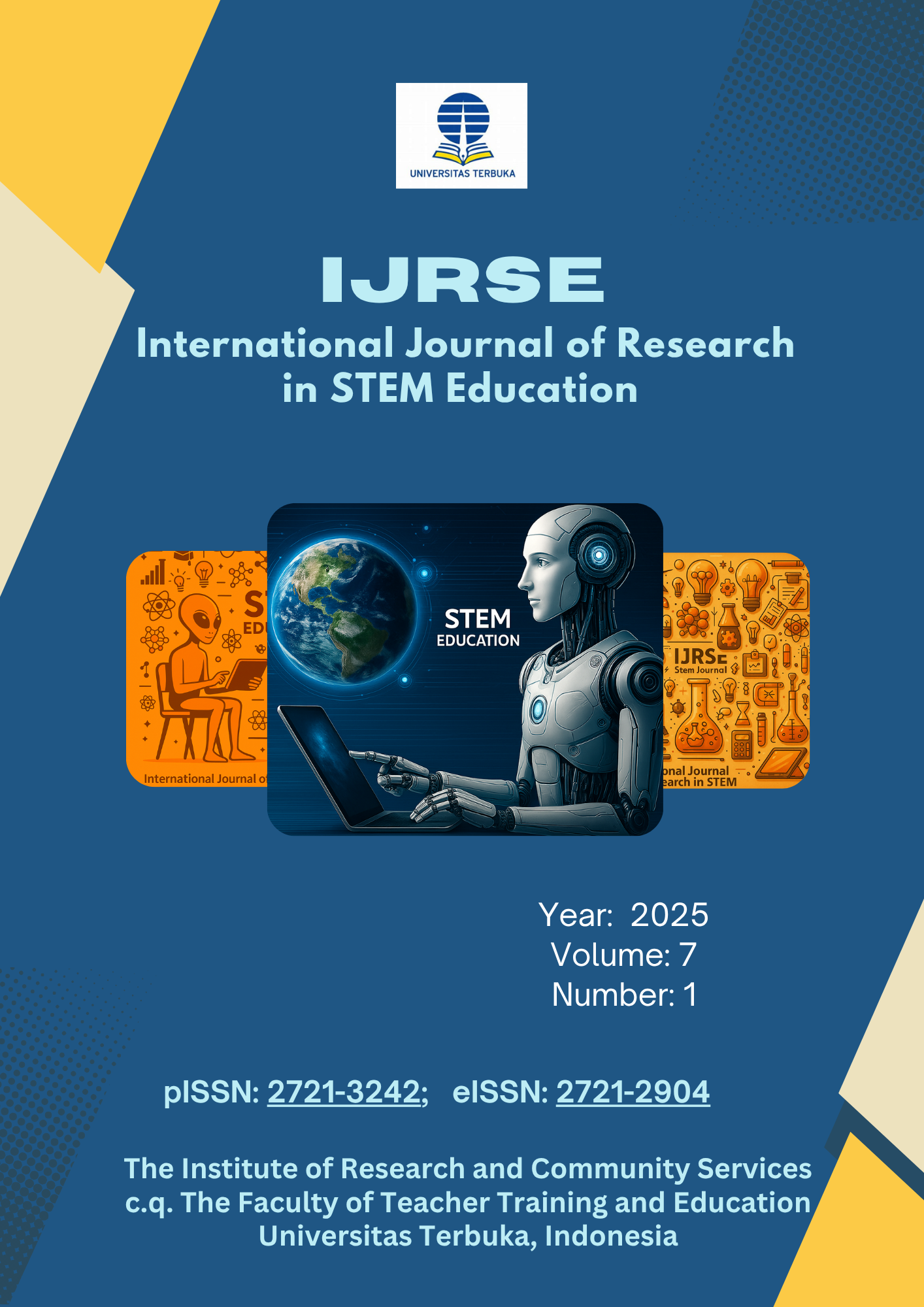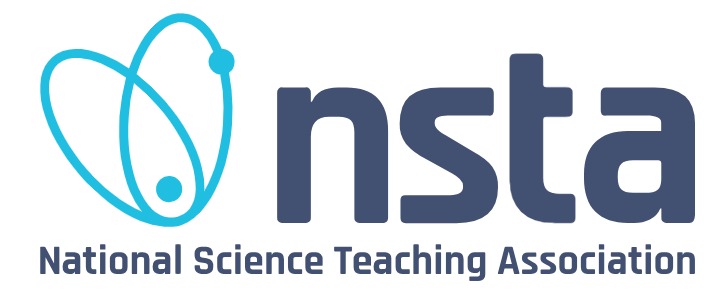Development of a Proposed Retooled Research Curriculum Framework for the Philippine Science High School
DOI:
https://doi.org/10.33830/ijrse.v7i1.1710Keywords:
Conceptual and procedural knowledge, curriculum, research education, Science Pedagogy, Project-Based LearningAbstract
The projected transition of the Philippine Science High School (PSHS) system's research curriculum from a three-year to a condensed two-year program. Furthermore, PSHS plans to adopt the Project-based Learning (PBL) approach in the coming years. Positioned ahead of these transitions, the study aims to develop a retooled research curriculum framework aimed at integrating conceptual understanding, procedural skills, and project-based learning (PBL) to optimize student learning outcomes and adapt to changes in pedagogical approaches. The retooled curriculum framework was developed using the 4D Model. The insights and perspectives regarding integrating conceptual, procedural, and project-based learning and the overall experiences within the research curriculum of 22 research teachers and 462 research students from across the eight Philippine Science High School – Luzon campuses were gathered. These insights, perspectives, and experiences led to developing the tripartite research teaching and learning model. Ultimately, the tripartite model serves as the foundation for the proposed retooled research curriculum framework of the Philippine Science High School, particularly in terms of crafted learning outcomes. Overall, the validity results showed a very high level indicating the readiness of the curriculum framework to be deployed and used for its projected transition.
References
Ahmad, S., Sultana, N., & Jamil, S. (2020). Behaviorism vs constructivism: A paradigm shift from traditional to alternative assessment techniques. Journal of Applied Linguistics and Language Research, 7(2), 19-33. https://doi.org/10.20935/AcadQuant7627
Alsubaie, M. A. (2016). Curriculum Development Teacher Involvement in Curriculum Development. Journal of Education and Practice, 7, 106-107. https://scirp.org/reference/referencespapers?referenceid=3210893
American Psychological Association. (2020). Publication manual of the American Psychological Association (7th ed.). https://doi.org/10.1037/0000165-000
Anderson, L. W. & Krathwohl, D.R., et al (2001) A taxonomy for learning, teaching and assessing: A revision of Bloom’s taxonomy of educational objectives. New York: Longman. https://www.jstor.org/stable/42926529
Anderson, L. W., Krathwohl, D. R., Airasian, P. W., Cruikshank, K. A., Mayer, R. E., Pintrich, P. R., ... & Wittrock, M. C. (Eds.). (2001). A taxonomy for learning, teaching, and assessing: A revision of Bloom's taxonomy of educational objectives. Addison Wesley Longman. https://www.quincycollege.edu/wp-content/uploads/Anderson-and-Krathwohl_Revised-Blooms-Taxonomy.pdf
Australian Curriculum, Assessment and Reporting Authority. (n.d.). General capabilities (Version 8.4). https://www.australiancurriculum.edu.au/f-10-curriculum/general-capabilities/
Badie, F. (2016). Towards concept understanding relying on conceptualisation in constructivist learning. 13th International Conference on Cognition Learning in Digital Age. http://teachinghistory.org/teaching-materials/teaching-guides/25184
Ball, D. L., Thames, M. H., & Phelps, G. (2008). Content knowledge for teaching. Journal of Teacher Education, 59(5), 389–407. https://doi.org/10.1177/0022487108324554
Baues, F. (2023, June 26). Scientific writing: Make your papers write themselves. StudySmarter UK. https://www.studysmarter.co.uk/magazine/scientific-writing/
Biggs, J., & Tang, C. (2011). Teaching for quality learning at university. McGraw-Hill Education.
Blumenfeld, P. C., Soloway, E., Marx, R. W., Krajcik, J. S., Guzdial, M., & Palincsar, A. (1991). Motivating Project-based learning: Sustaining the doing, supporting the learning. Educational Psychologist, 26(3/4), 369-398. https://psycnet.apa.org/doi/10.1207/s15326985ep2603&4_8
Björk B. C. (2017). Open access to scientific articles: a review of benefits and challenges. Internal and emergency medicine, 12(2), 247–253. https://doi.org/10.1007/s11739-017-1603-2
Bruner, J. (1961). The act of discovery. Harvard Educational Review, 31(1), 21-32. https://doi.org/10.4324/9780203088609-13
Calamlam, J. M., & Gamboa, G. (2021). Practical Research worksheets for Senior High school. ResearchGate. https://doi.org/10.13140/RG.2.2.34834.68802/1
Canobi, K. H. (2009). Concept-procedure interactions in children's addition and subtraction. Journal of Experimental Child Psychology, 102(2), 131-49. https://doi.org/10.1016/j.jecp.2008.07.008
Chi, M. T. (2006). Two approaches to the study of experts' characteristics. Mahwah, NJ: Lawrence Erlbaum Associates. https://psycnet.apa.org/doi/10.1017/CBO9780511816796.002
Comparing facilitation, coaching, mentoring and teaching. (n.d.). Scrum.org. https://www.scrum.org/resources/comparing-facilitation-coaching-mentoring-and-teaching
Creswell, J. W., & Creswell, J. D. (2017). Research design: Qualitative, quantitative, and mixed methods approaches. Sage publications. https://doi.org/10.1002/nha3.20258?urlappend=%3Futm_source%3Dresearchgate
Karolinska Institutet. (n.d.). Course syllabus - Scientific Research Methods. https://education.ki.se/course-syllabus/5HI022
Data analysis and presentation. (2009, October 5). https://www150.statcan.gc.ca/n1/pub/12-539-x/2009001/analysis-analyse-eng.htm
Davis, S. (2014). Facilitator as coach, teacher, trainer, and mentor. https://facilitatoru.com/training/facilitator-as-coach-teacher-trainer-and-mentor/
Day, R. & Gastel, B. (2016). How to write and publish a scientific paper (8th edition). https://www.shuyiwrites.com/uploads/1/3/0/4/130438914/how_to_write_and_publish_a_scientific_paper.pdf
Deci, E. L., & Ryan, R. M. (2000). The “what” and “why” of goal pursuits: Human needs and the self-determination of behavior. Psychological Inquiry, 11(4), 227-268. https://psycnet.apa.org/doi/10.1207/S15327965PLI1104_01
De Jesus, E. C. (2023, July 6). Chasing comprehensive curricular change | Inquirer Opinion. INQUIRER.net. https://opinion.inquirer.net/164554/chasing-comprehensive-curricular-change
Denzin, N. K., & Lincoln, Y. S. (2011). The Sage Handbook of Qualitative Research (4th ed.). Sage Publications. https://doi.org/10.4135/9781529770278.n19?urlappend=%3Futm_source%3Dresearchgate
Elsevier Author Services. (2023, August 4). How to submit a paper for publication in a journal. Elsevier Author Services - Articles. https://scientific-publishing.webshop.elsevier.com/publication-recognition/how-to-submit-a-paper-for-publication-in-a-journal/
Essuman, I. K. (2014). Reflective Practice in teaching and learning of Science. Keb. https://www.academia.edu/7480150/Reflective_Practice_in_teaching_and_learning_of_Science
Gall, M. D., Borg, W. R., & Gall, J. P. (1996). Educational Research: An Introduction (6th ed.). White Plains, NY: Longman. https://archive.org/details/educationalresea0008gall

Downloads
Published
How to Cite
Issue
Section
License
Copyright (c) 2025 Leo Peter Dacumos

This work is licensed under a Creative Commons Attribution-NonCommercial 4.0 International License.
Content Licensing, Copyright, and Permissions
1. License
International Journal of Research in STEM Education (IJRSE) adopts the Creative Commons Attribution-NonCommercial 4.0 International License (CC BY-NC 4.0) as the optimal license for the publication, distribution, use, and reuse of scholarly works for non-commercial purposes.
The non-commercial use of the article will be governed by this license, which allows others to share and adapt the work provided proper attribution is given to the author(s) and the journal.
Creative Commons Attribution-NonCommercial 4.0 International License.
Creative Commons License: CC BY-NC 4.0
2. Author's Warranties
The author warrants that the article is original, written by the stated author(s), has not been published before, contains no unlawful statements, does not infringe the rights of others, is subject to copyright vested exclusively in the author, is free of any third-party rights, and that all necessary written permissions to quote from other sources have been obtained by the author(s).
3. User Rights
The International Journal of Research in STEM Education aims to disseminate published articles as freely as possible. Under the Creative Commons license, users are permitted to copy, distribute, display, and perform the work for non-commercial purposes only, provided that proper attribution is given to the author(s) and this journal.
4. Rights of Authors
Authors retain the following rights:
- Copyright and proprietary rights related to the article, such as patent rights.
- The right to use the substance of the article in future works (e.g., lectures, books).
- The right to reproduce the article for personal purposes.
- The right to self-archive the article.
- The right to enter into separate, additional non-exclusive contractual arrangements for the distribution of the article’s published version (e.g., posting to an institutional repository or publishing it in a book), with acknowledgment of its initial publication in IJRSE.
If the author has a non-exclusive publishing contract with another publisher under a more restrictive license, the author still retains all rights to republish or distribute the work elsewhere, including commercially, as the author is not bound by the license conditions imposed on the journal.
5. Co-Authorship
If the article has multiple authors, the signatory of this agreement warrants that he/she has been authorized by all co-authors to sign this agreement on their behalf and agrees to inform all co-authors of the terms of this agreement.
6. Termination
This agreement may be terminated by either the author or IJRSE with two months’ notice if the other party has materially breached this agreement and failed to remedy such breach within one month after receiving written notice.
No breach or violation of this agreement will cause automatic termination or affect the license granted to IJRSE.
7. Royalties
This agreement entitles the author to no royalties or other fees. To the extent legally permissible, the author waives the right to collect royalties in respect of any use of the article by IJRSE or its sublicensees.
8. Miscellaneous
IJRSE will publish the article (or have it published) once the editorial process has been successfully completed.
The journal reserves the right to edit the article for style, punctuation, spelling, capitalization, referencing, and consistency as deemed appropriate.
The author acknowledges that the article will be made publicly accessible, and such access will be free of charge for readers.







